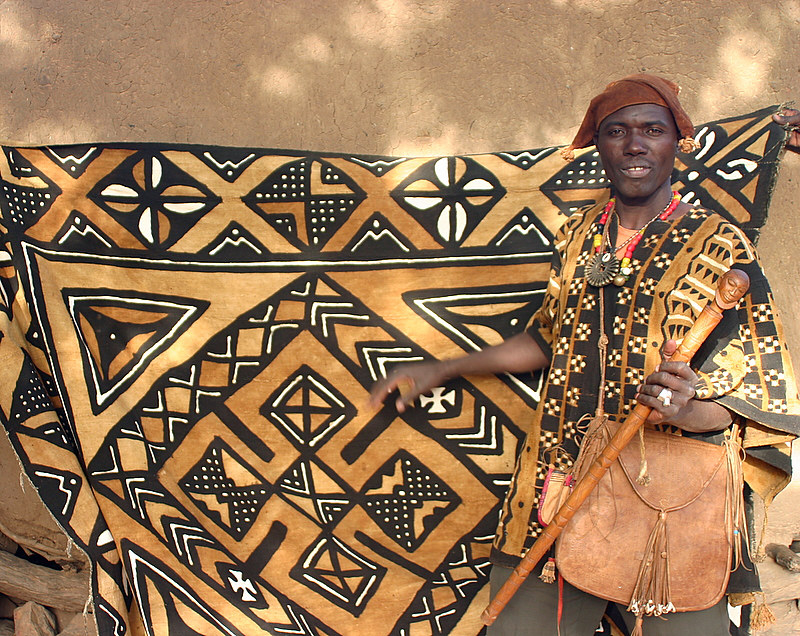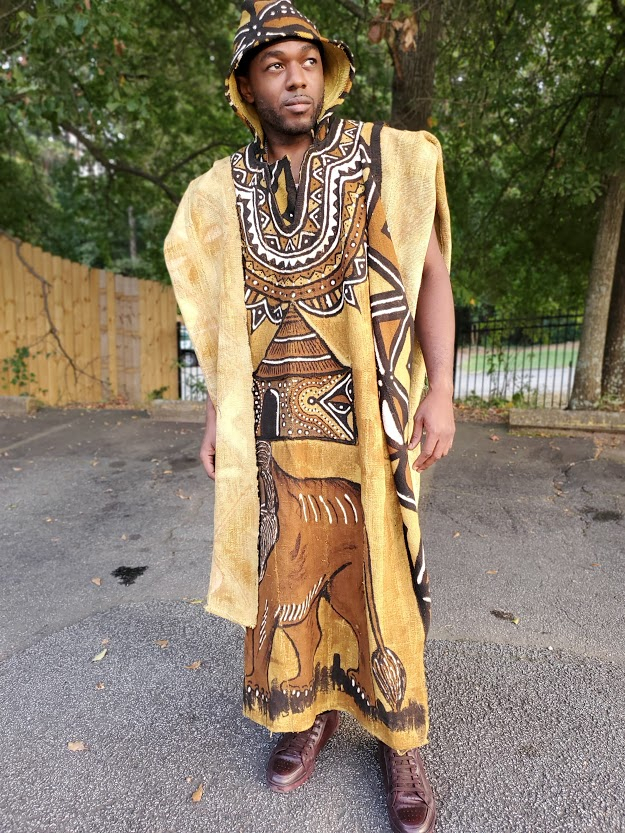Bogolanfini
Bògòlanfini or bogolan is a handmade Malian cotton fabric traditionally dyed with fermented mud. It has an important place in traditional Malian culture and has, more recently, become a symbol of Malian cultural identity. The cloth is being exported worldwide for use in fashion, fine art, and decoration. Traditionally, bògòlanfini production was done by men weaving the cloth and women dyeing it. On narrow looms, strips of cotton fabric about 15 centimeters wide are woven and stitched into cloths about 1 by 5 meters long.
In traditional Malian culture, bògòlanfini is worn by hunters, serving as camouflage, ritual protection, and as a badge of status. Women are wrapped in bògòlanfini after their initiation into adulthood (which includes genital cutting) and immediately after childbirth, as the cloth is believed to have the power to absorb the dangerous forces released under such circumstances. Bògòlanfini patterns are rich in cultural significance, referring to historical events (such as a famous battle between a Malian warrior and the French), crocodiles (significant in Bambara mythology), or other objects, mythological concepts, or proverbs. Since about 1980, Bògòlanfini has become a symbol of Malian cultural identity and is being promoted as such by the Malian government.










